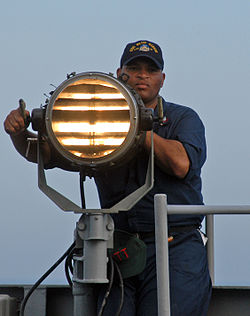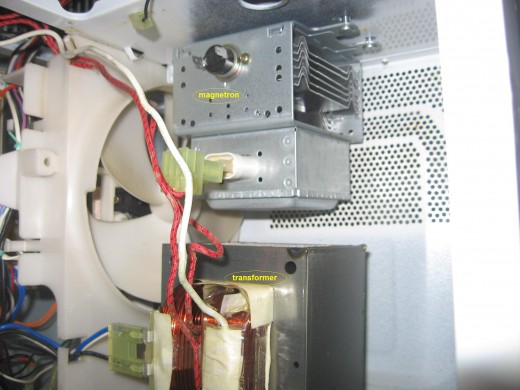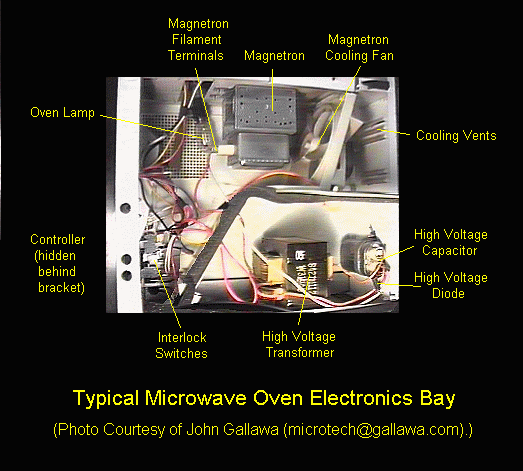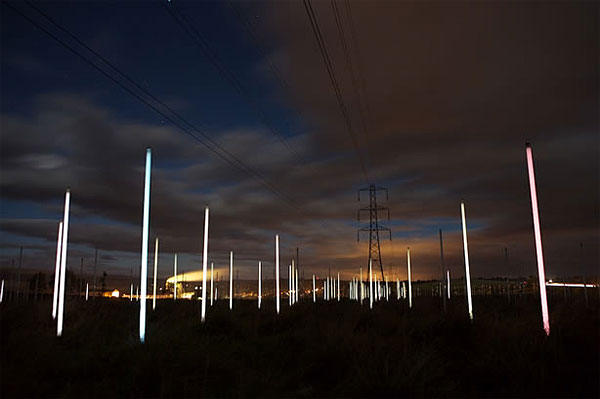can use Microwave Ovens lamp for transmit data
is it possible use Microwave Ovens lamp for transmit data?how can?

Do you know Morse code?
Yes.
i want to do fm or am modulation
C'mon... That?s joke, you may use the light bulb to make an Aldis Lamp used for Naval Daylight Signalling.

What particular problem are you facing?
Switching a lamp on and off, or operating a shutter in front of it can be considered as amplitude shift keying (ASK), a kind of amplitude modulation. The capabilities of electrical modulation are mainly limited by the filament time constant. That's pretty obvious, isn't it?
Looks like refrigrator door lamp...
Good luck..
Hello friends
as you see in some transmitter use microwave vacuum tube.i want to know the principle of microwave transmitter and fm or am modulation with it.do you know what and where can i find this component?
There may be a misunderstanding. The oven lamp is not the source of microwave. It's just a light source.
The only common point is that a magnetron (a special vacuum tube generating the microwave power) and an incandescent lamp are using a filament.
I suggest Wikipedia for some basic informations.
http://en.wikipedia.org/wiki/Magnetron
http://en.wikipedia.org/wiki/Microwave_transmission
what is difference between magnetron and Microwave Ovens lamp because i see magnetron Microwave Ovens
That's a magnetron


https://www.google.com/search?q=magn...w=1254&bih=667
and the "microwave oven lamp' = that's a simple incandescent light bulb
hello jiripolivka
im sorry that waist your time.but someone tell me about the microwave lamp for transmitter but i didn't see it before so i assume that its the component that my friends said
If you can't tell, or don't know the difference between an appliance lamp and a microwave tube you best not be playing around with either of them; you'll hurt yourself and possibly others. That is said in all seriousness.
Yes you can build both microwave receivers and transmitters with aid of a lamp.
Receiver.
Transmitter
Fluorescent tubes can also be used as microwave antennas.
A lamp as a radio wave length measurement tool
It is no need for a special microwave oven lamp, even lamps that under normal circumstances are broken can produce light if placed inside a microwave oven.

http://www.doobybrain.com/2008/02/03...bulbs-to-glow/
Many decades ago a common hobby project was to drive an incandescent lamp with an audio amplifier. Then use a photo cell and amplifier for receiving. The modulation level was very low and the frequency response was terrible, but it was a fun project for many people.
Try ordinary base band data at a low data rate. Then on the receive side use a comparator comparing a long term average level (RC network).
I have (somewhere in the attic) a very old electronics book that describes how to build A simple television using a light bulb and a rotating slotted disk. The light bulb is modulated as the slotted disk creates the scan lines on a rear projection screen. There is also the 'camera' design, with a similar slotted disk and a photocell.
Amazing to think that it could actually work!
As you can review in this thread, I was also thinking of modulated light first. But it turned out, the the original poster actually intends microwave RF transmission...
FoxyRick, it's called a Nipkow disk and it's still in use ! Take a look at www.nbtv.org
They produce a rather nice, although thin magazine with lots of construction articles for mechanical cameras and TVs.
Brian.
Nipkow disk - that's it! I didn't know there was so much on the web about them.
Imagine having one of these above the mantle piece:

This is going way off topic but many years ago I made a crude mechanical TV out of two small relays and part of an old bus!
The relays were plug-in types with the coil upright, I fitted a small mirror to the 'rocker' part of their mechanisms and feed the coils with the outputs of oscillators so they moved to make the scan. The light source was a HeNe laser which was originally used on Bristol buses as an experiment to read bar-codes from street signs in order to locate them, it didn't work and the lasers went on the surplus market. As you might guess, this was done for fun and would never be commercially viable. It was also in pre-GPS days of course! No guesses at how bad the picture was, but it did work 'kind of'.
One of my many planned projects is to rebuild it using laser LEDs (immediately making it 1% of the original size) and a much more responsive scan mechanism. When I have time........
Brian.
On topic
You can find here some links to experiments on phase locking a microwave oven magnetron by controlling the cathode voltage via a high voltage valve voltage regulator.
The principle is based on the typical power supply pulling of the magnetron frequency, but the tuning range is quite small, so the magnetron cannot be pulled far off from its nominal frequency .
http://www.vhfdx.info/docs/mwpll.pdf
http://lea.hamradio.si/~s57uuu/misch...netr/index.htm
http://www.vhfdx.info/docs/tahir.pdf
